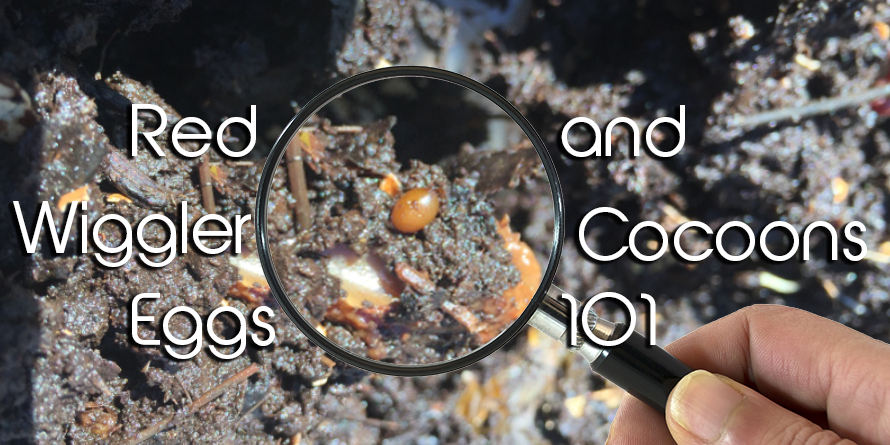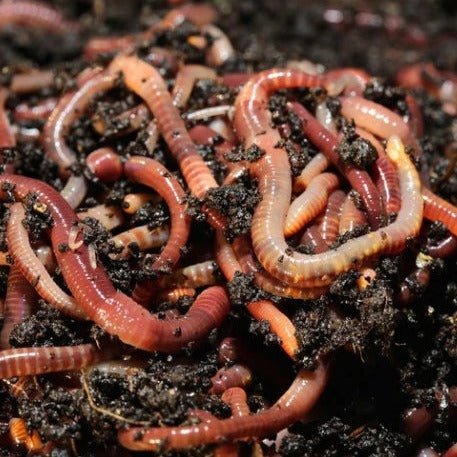Red Wigglers: The Unsung Heroes of Organic Waste Recycling
Red wigglers, or Eisenia fetida, offer as important agents in the organic waste reusing procedure, changing discarded products into important vermicompost. As the globe increasingly looks for services to fight waste build-up and improve farming efficiency, recognizing the function of these worms becomes vital.
What Are Red Wigglers?
The exceptional resilience of red wigglers, scientifically called Eisenia fetida, underscores their critical function in organic waste recycling. These small, reddish-brown earthworms are commonly discovered in decomposing natural matter, such as compost heaps and manure heaps. Lake Hickory Bait. Unlike various other earthworm types, red wigglers flourish in nutrient-rich settings and are highly effective at damaging down natural materials, making them crucial for vermicomposting

(Red Wiggler Express)In enhancement to their function in waste decrease, red wigglers add to dirt health by enhancing soil structure and oygenation via their burrowing tasks (Lake Hickory Bait). Their existence in composting systems not just boosts disintegration prices however additionally promotes a sustainable technique to waste administration, highlighting their relevance in eco-friendly preservation initiatives
Advantages of Composting With Worms
Composting with worms, specifically red wigglers, offers numerous advantages that improve both waste administration and dirt wellness. These worms effectively break down organic waste, transforming it right into nutrient-rich vermicompost that enriches soil. This process accelerates decomposition, allowing for a quicker recycling of cooking area scraps and various other organic materials compared to standard composting approaches.
Furthermore, the vermicompost created by red wigglers is brimming with advantageous microbes, which help boost dirt structure, oygenation, and dampness retention. This enhances the total health and wellness of plants, promoting strenuous development and enhanced returns in gardens and farming setups. The use of worms in composting decreases the production of greenhouse gases, such as methane, adding to a much more sustainable waste management system.

How to Start Vermicomposting
Developing a vermicomposting system is a straightforward procedure that can yield considerable advantages for both waste management and dirt enrichment. To start, pick an ideal container, such as a plastic bin or wood box, with ample ventilation holes to guarantee proper airflow. The measurements must preferably be about 2 feet by 3 feet, allowing adequate area for the worms to thrive.
Next, prepare bed linens product, which can be composed of shredded newspaper, cardboard, or coconut coir. This bedding needs to be moistened to develop an appropriate environment for the worms. When the bedding is in location, present red wigglers (Eisenia fetida) right into the container, typically around one extra pound of worms for every single square foot of surface.
Following the positioning of worms, include natural waste, such as vegetables and fruit scraps, coffee grounds, and crushed eggshells. Stay clear of adding milk, meat, or oils, as these can create odors and draw in parasites. Position the container in a shaded, temperature-controlled location to keep optimal conditions for worm task. With these steps, you will properly initiate a vermicomposting system that adds to lasting waste management and enriches your soil.
Preserving a Healthy Worm Container
(Red Wiggler Express)Keeping a worm container prospering requires regular attention and like make certain the health of the red wigglers and the effectiveness of the composting process. Appropriate maintenance begins with keeping track of the wetness levels; the bin ought to perspire but not soaked. An excellent guideline is to preserve a consistency comparable to a wrung-out sponge.
Oygenation is essential. Carefully blending the bed linen and food scraps every few weeks prevents compaction and makes sure that all worms have access to oxygen. Additionally, it is essential to feed the worms properly. A well balanced diet plan of fruit and veggie scraps, coffee grounds, and crushed eggshells should be offered in small amounts to avoid overfeeding, which can bring about smells and insects.
If the container becomes as well hot or chilly, the worms may become stressed out. By faithfully handling these aspects, one can maintain check over here a robust and productive worm bin.
Influence On Sustainable Living
The effective maintenance of a worm bin not only benefits the health and wellness of red wigglers however also contributes dramatically to sustainable living methods. By reusing natural waste, such as kitchen scraps and backyard particles, red wigglers aid divert substantial amounts of material from garbage dumps. This reduction in waste not just lowers greenhouse gas exhausts however also lessens the ecological problem related to waste management.
Furthermore, the castings created by red wigglers work as a nutrient-rich natural fertilizer, improving dirt health and promoting plant development. This all-natural choice to chemical plant foods sustains lasting farming and horticulture techniques, reducing reliance on artificial inputs that can hurt ecological communities. Additionally, worm composting promotes awareness of waste management, motivating individuals and neighborhoods to adopt more lasting routines.

Conclusion
In recap, red wigglers offer as important factors to natural waste recycling via their efficient decomposition of natural materials. By incorporating vermicomposting right into waste management approaches, people and areas can substantially lower waste while promoting ecological sustainability.